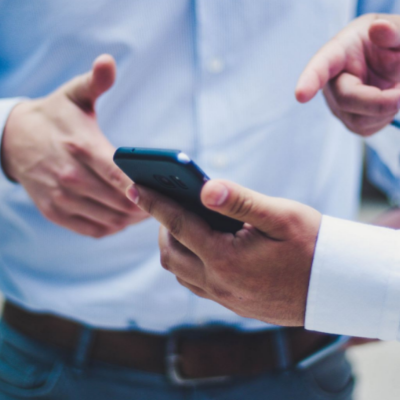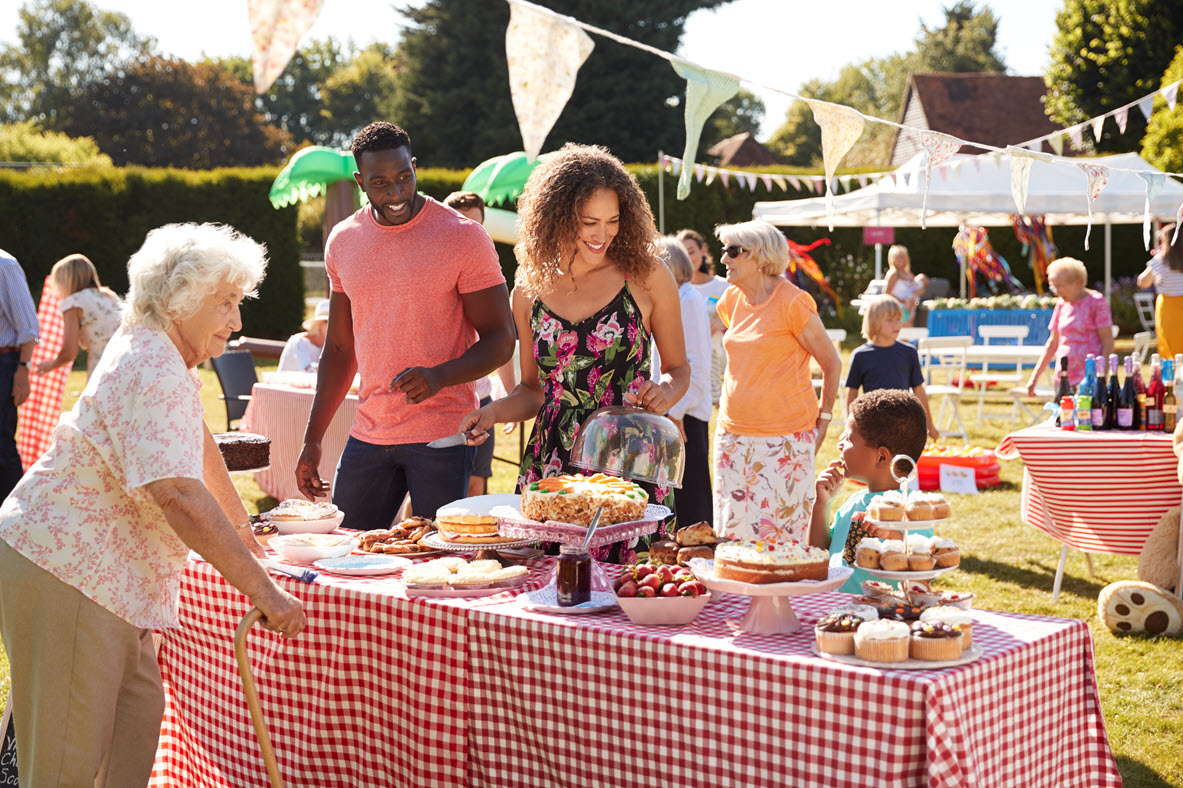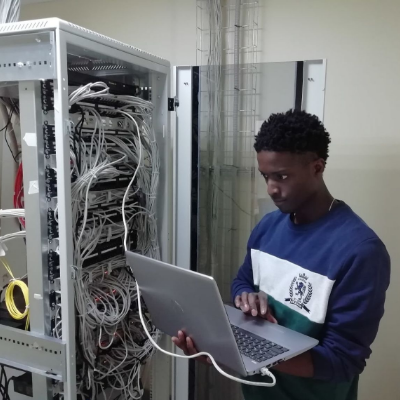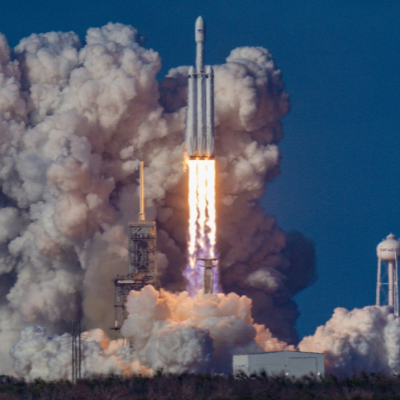See your organization thrive! Improve the customer experience by keeping your sales, marketing
and customer service teams on the same page.
and customer service teams on the same page.
�
|
Grants can be a major source of funding for any nonprofit organization, however the discovery and application process for these grants can be a little intimidating for a smaller organization. Here are some tips and great resources you can check out to help you in your search for grants.
0 Comments
...if your account managers are following your sales process?  Most software ROI calculations are built off of two tenets: sell more or cut costs. The problem that most organizations run into is that they have no solid numbers to address either; “sell how much more”, or “save how much time” can be elusive concepts. I suggest that there are three fundamental business objectives that sales, marketing, and service must focus on and can be used to justify a Dynamics CRM system: 1) find more customers like our best ones, 2) keep the ones we want, and 3) increase profitable transactions. No Longer Just a Sales System
CRM software (Customer Relationship Management) has evolved to support organizational business goals across the enterprise; sales, marketing, customer service, relationship building, field service and project management. For non-profits the utilization reaches beyond these areas to include membership management, fundraising, variance in quality, case worker scheduling and volunteer management. A well-implemented Dynamics CRM will focus users on achieving the business goals, both with processes and behaviors monitoring. While a poorly implemented deployment will waste time and money and cause needless frustration for your employees, partners and customers. Why the focus on implementation and not the software? As we determine the deployment requirements for Dynamics CRM, one of our first discovery questions we ask for is a copy of the sales process. It is still quite surprising how many organizations do not have a documented process. We are often told that sales process is something that “all the account managers know”. Sometimes there might be an elaborate Visio diagram tucked away, out of sight, generated by a previous VP of Sales, which outlines an unusual number of steps, however, today no one on the sales team is aware of or following. Even when a sales process is unearthed, quite often there is no role for marketing in the process.
According to Objective Management Group http://www.objectivemanagement.com/ 92% of the companies whose sales force they evaluate have ineffective, incomplete, non-existent sales processes, or sales processes that their people don’t follow.  The COVID-19 pandemic has had a staggering impact on us all, affecting everything from the way we do business to the way we grocery shop. Unfortunately, it’s no secret that the negative impacts of COVID-19 disproportionally affect vulnerable populations including the elderly. Flaws in hospice care, home health care and nursing home care are not new, but the pandemic has certainly magnified shortcomings to a shocking degree More than a fifth of the deaths from COVID-19 in the U.S. are residents of nursing homes. That is an estimated 150,000+ deaths so far. How can administrators fix health / hospice care problems?  There are three types of Microsoft Dynamics CRM failures that I have encountered:
Notice what I didn’t mention – Picking the wrong CRM system. Very seldom does a Dynamics 365 CRM project fail because the wrong CRM software was selected. Especially when that software is Microsoft Dynamics 365, one of the most modern and versatile CRM solutions on the market today. The problem I see most often is that Dynamics CRM has been implemented as a technology project and not as a change management effort.  Dear Bob, As a national sales manager, I have a full-time job already. While recognizing that using a CRM is an evolving tool where users need to be given direction and and behaviors that I want must be monitored, I am just not finding the additional time in my day. I tend to only focus on how Dynamics is working just before each quarterly sales meeting. In that sales meeting, I bark out directives on how we are going to start using the tool more effectively. What should I be doing different? - Jon Dear Jon,
Your first step is to change your mindset about how you and your team use Dynamics CRM. It is not an add-on task for you or your team. Rather it is your primary sales process and management tool. Bob, We deployed Dynamics CRM about four years ago, and frankly I don’t think we have moved the needle in the last few years to get enough value out of the tool. What should we be doing different? - Jake Dear Jake,
Deploying and using CRM is a moving through a maturity process. The first step is understanding that you need a phased plan – a roadmap. Your plan must have measurable milestones. With everyone in the organization having the ability to visualize the key KPIs en route, and make adjustments in the roadmap as needed.  Bob, Is there a way in Dynamics 365 connect a survey tool to our CRM contact data and use a workflow to send out an email survey in follow-up to customer service calls? - Mary Ann Dear Mary Ann, Absolutely, in fact there is a better way. Your Dynamics 365 Online application delivers with a module that you can use not only for case follow-up but other surveys that will help you understand customers’ needs and if you are measuring up to their expectations. Dynamics 365 Customer Voice is a much overlooked, but highly effective application that ingrates with your CRM contact data. What questions can you use to help determine if a client needs their CRM Refreshed?
A good starting point for a conversation is asking the CEO/Owner how well is their current CRM system telling them:
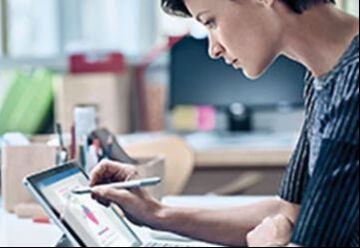 Covid-19 has amplified inequalities in our communities and around the world. As the demand for nonprofit services grows significantly, resources and funding are tightening up. For many nonprofits, there has never been more pressure to find ways to do more with less – increase the scale of your operations, improve efficiency, and protect your beneficiaries’ and donors’ data. During a period when many organizations are still struggling to overcome the challenges of the pandemic, some cloud providers are reducing their cloud grant for nonprofits. For example, AWS is currently offering $1,000 (USD) in cloud grants, down from $2,000 (USD). Microsoft is positioned to play an important role in addressing this pressure and unlocking new opportunities for nonprofits. Microsoft offers a $3,500 USD annual Azure grant to eligible nonprofit organizations – currently more than 3x what AWS offers. Microsoft Azure helps nonprofit organizations reduce costs, manage infrastructure constraints, enhance your organization’s security posture, and scale up or down based on your needs. In addition to the grant, there are several tools and offers that can help nonprofits make the most of Azure:
Get started with your Azure grant today. Bob, I need to flush out the details of our customer's sales process with their team, how do I get started? Jack, National Sales Manager Jack,
It is great that you are thinking about getting everyone rowing in the same direction. Establishing sales stages and writing out clear definitions of what is expected to happen in each stage provides everyone with a common language for discussing opportunities in the pipeline. It will cut down deals getting lost and account managers “blowing smoke” about closing statuses. Bob,
We have been so focused on getting Dynamics right for our sales process that we have neglected our service side. What is the best way to bring their calls, request for returns and quality issues, tracked in a separate system, into a company-wide view of the customer? Gabrielle Dear Gabrielle, It’s good you are thinking along the lines that there is value in having one-view of your relationship with a customer. Too often I see account managers needing to chase down customer services issues before a client call, or that service is fixing an old product, or worse yet, a competitive product, that if sales knew they would want to replace Our clients don’t have time to waste in today’s fast-paced marketplace. To stay agile, with your help, they are adopting new business models, enabling remote work, and looking to you for solutions.
You can help their sales and marketing teams optimize processes, transform insights, and enable remote collaboration with Dynamic 365 CRM and InfoGrow’s guidance. What Customers Are Saying New capabilities available now in Microsoft Fundraising and Engagement
I am excited to share new capabilities available now in Fundraising and Engagement, part of Microsoft Cloud for Nonprofit, to help nonprofits across the globe exceed their fundraising goals, serve more beneficiaries, and deliver more effective programs. Bob,
I keep seeing notices about Power Apps and really not grasping what value they might add to our use of Dynamics. Might you explain and provide some examples? Judy Dear Judy, Microsoft has provided a suite of apps, services, connectors and data platform that all make up the bundle called PowerApps. These apps are part of the Microsoft Power Platform, that includes PowerApps, Power BI and Power Automate. Dear Bob, Where can I get the latest insights as to what changes and enhancements are coming down for Dynamics 365 CRM? - Jackie Dear Jackie,
We maintain a video library on our website - check out the Dynamics 365 CRM Coming Soon tab. Dear Bob, I have a client asking me what is difference between a free CRM system and Dynamics? Since free is always good - how do I provide him with guidance? -- Phil, MSP Dear Phil,
For getting started, the simple answer is that any CRM will do. A CRM system is like a young child. At first, the focus is just getting the child to talk and walk. Long term, however, you want them to mature, learning and do more. As your client moves to do more, mature with their CRM system, that is where a basic tool and more advance tool quickly separate. Dear Bob, My CFO is asking if our Dynamics CRM deployment was worth the cost. We are in year three of our use of Dynamics and I was not here for the decision to purchase. How do I respond? -- Jack, New Sales Manager Dear Jack,
Since you were not part of the decision process it will be difficult for you collect all of the deployment cost to build your case. I therefore suggest using a combination of the following approaches: Dear Bob, We are an IT Services company. I have a client who uses Dynamics 365 CRM - but they're really frustrated with the tool. I would like to help them but the whole CRM business model is not a good fit for us. I also don’t want to lose my relationship with the client by just passing them off to anyone. However, I know that if I don’t take action soon the client will go out on their own looking for help, which might cut me out altogether. What options do I have? -- John Dear John,
A majority of CRM referrals that we get from our IT Managed Service partners are existing Dynamics 365 CRM users who are stuck and highly frustrated. They are not getting the results they expected, and your client’s problem can easily cause you grief. Dear Bob, We spend a good deal of resources generate leads for our sales team only to see that the leads are not being followed up. How do I get my CEO to get the sales and manger managers in the same room to make lead follow up a priority? -- Jane Dear Jane, There are two primary reasons that lead follow up doesn’t happen. First, the leads are not what I would call Marketing Qualified. Second, there is not enough vision by the CEO, CSO and CMO into what is happening with leads, or better yet what is not happening. Marketing Qualified Leads Account managers will focus on efforts that put dollars in their pocket. As marketers we must recognize that is a truism. As such, marketing must make any leaded passed on an account manager as qualified. Marketing Qualified means that a lead meets the qualification you have for industry type, size, product and whatever sales has provided you as the top three items that a good lead must contain. And that you have included this information with the lead as well verifying the company name, website, and phone number. Dear Bob, I have a client with an older copy of Goldmine that they just have outgrown. I am afraid to outsource what I don’t know and risk the relationship. -- Mike Dear Mike,
Don’t be afraid to partner. Don’t be afraid to tell your client that CRM is not your specialty, however, you have the capability to bring in someone who is an expert. And together, we can work with you to provide the best possible solution. Change is inevitable – but how do you keep evolving? Dear Bob, Bob, what are some of the key features added to Dynamics 365 Sales in the latest release? -- Beth Dear Beth,
I have picked out 3 features in the latest release that should get your attention. Duplicate Detection – Enhanced Email Experience – Added PDF Capabilities The feature overview video below, highlights new capabilities included in the latest update to Dynamics 365 Sales. |
HOME | SERVICES | SOLUTIONS | BLOG | WHY INFOGROW | CONTACT US |
Address2140 Front Street
Cuyahoga Falls, OH 44221 |
Telephone |
|
© 2024 InfoGrow Corporation







